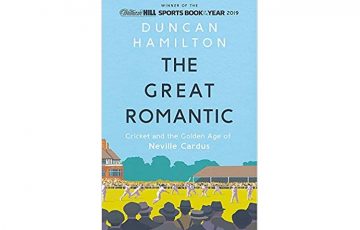Full disclosure: We went to Jarrod’s wedding and were also sent a free book to review. However, we did also have to pay £3 in bail money to release said free book from a Royal Mail prison after it had been charged with insufficient postage, so we pretty much balance out as impartial.
There is a need for this book, you will learn from it and you will enjoy it. We can pretty much guarantee all of those things, so in many respects the review ends here. That is all you need to know. Buy it now before you forget and then read it whenever. If you for some reason need a bit more convincing, read on.
Warts and all, but with more focus on the warts
You will not struggle to find books about the history of cricket. Where this one stands out is that most of those books sand away rough edges whereas Jarrod’s inclination is to seek them out and preserve them. It makes for a truer account of the sport and one which is way more readable. At times, it has an unsettlingly authoritative air about it. To offset this, we pretended that Jarrod had stuck a line break in after every frigging sentence like he always used to, and then we felt okay again.
What’s it about? It’s about the history of Test cricket; all the most significant characters and events that have brought it from where it started to where it is now. It’s the kind of subject matter that in other hands might lead you to glaze over, but this book is light on stats and heavy on hyperbole, which keeps you interested and sneaks the facts into your brain as a result.
Asking Don Bradman to understand why people rated Victor Trumper above him is “like asking a calculator to understand a painting.” In the early days of cricket, a sticky dog was “a wet pitch that got a bit dry and behaved like Glenn Close in Fatal Attraction.”
Those two lines are on consecutive pages. the book maintains roughly that tone from WG Grace to the three Ws to Imran Khan to Brendon McCullum.
In summary
Test Cricket: The Unauthorised Biography is a serious book. It’s an earnest story told colourfully, rather than a funny book that makes serious points. It’s not that Jarrod’s lost his sense of humour so much as that he’s looking to inform more than he was before; a shift in emphasis rather than an outright change in approach. Whether that’s an improvement or not is probably a matter of opinion, but if the alternative is knocking out the same sort of writing as he did way back when, it would be subject to the law of diminishing returns. This feels new and fresh and is as page-turny as anything else he’s written.
History books can be staid and tiresome and hard to engage with. This is anything but. If we had to pick someone to do the research and tell the story of Test cricket, we’d pick Jarrod. Fortunately, we don’t have to because he’s already done it.




Last time you reviewed Jarrod’s book, you started thusly:
“First, a disclaimer: we went to Jarrod’s wedding. Set against that is the fact that he’s Australian, so we probably average out as being impartial.”
It’s a three buck postage stamp that’s doing the balancing act now….either you’ve warmed to Australians, or you must really, really hate the post-office.
He’s less Australian than he was. The postage makes up the shortfall.
So, do you like it or not? It’s hard to tell.
Just posting so you have more than the usual three comments on a book review/puff piece.
Now everyone will think this book is amazing. You’re welcome.
Come on, we did say it was an earnest story rather than a funny book. In our world criticism doesn’t come much more brutal than that.